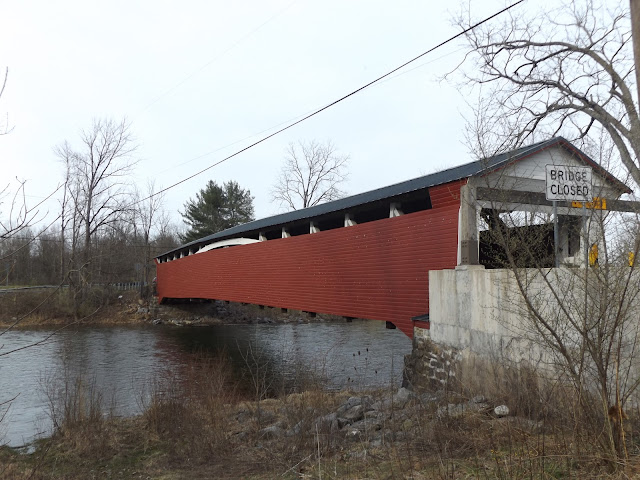Also known as the Millmont Red Bridge, the Glen Iron Bridge or the Red Covered Bridge, the Millmont Covered Bridge is Union County, Pennsylvania's longest covered bridge. Spanning 159 feet across Penns Creek in the small community of Millmont in Hartley Township, the Millmont Covered Bridge was originally built in 1855 and designed with the style of a covered Burr arch-truss. Once the location of an important local crossing over Penns Creek, the bridge was bypassed by a modern bridge capable of handling heavier traffic in 1976. It now serves pedestrian and bicycle traffic, as it closed to motor vehicles in 1998.
The Millmont Covered Bridge has seen a few restorations over its history. There was a restoration of the bridge that took place in 1958. Another restoration took place in 2010. As the bridge was posted to the National Register of Historic Places on February 8, 1980, the Pennsylvania Historical & Museum Commission required the work to maintain the historical integrity of the original 1855 structure. While Union County was trying the secure and negotiate the $1.1 million needed in funding to restore the bridge, there was a windstorm with 55 to 65 mile per hour gusts took the roof off the bridge. But with the restoration having already been scheduled, that allowed for timely repair.
 |
| Penns Creek. |
 |
| The bridge has a low clearance. It's best that it no longer serves motor vehicles. |
 |
| Inside the covered bridge |
How to Get There:
Sources and Links:
PA Bucket List - Exploring the Millmont Covered Bridge in Union County
Bridgehunter - Millmont Covered Bridge 38-60-01 #2
PA Covered Bridges - Millmont/Red Bridge Restoration
Vermont Covered Bridge Society - Wind Takes Roof Off Millmont Covered Bridge
Update Log:
December 16, 2021 - Crossposted to Quintessential Pennsylvania (https://quintessentialpa.blogspot.com/2021/12/millmont-covered-bridge.html)



Comments